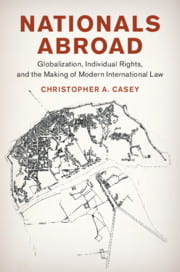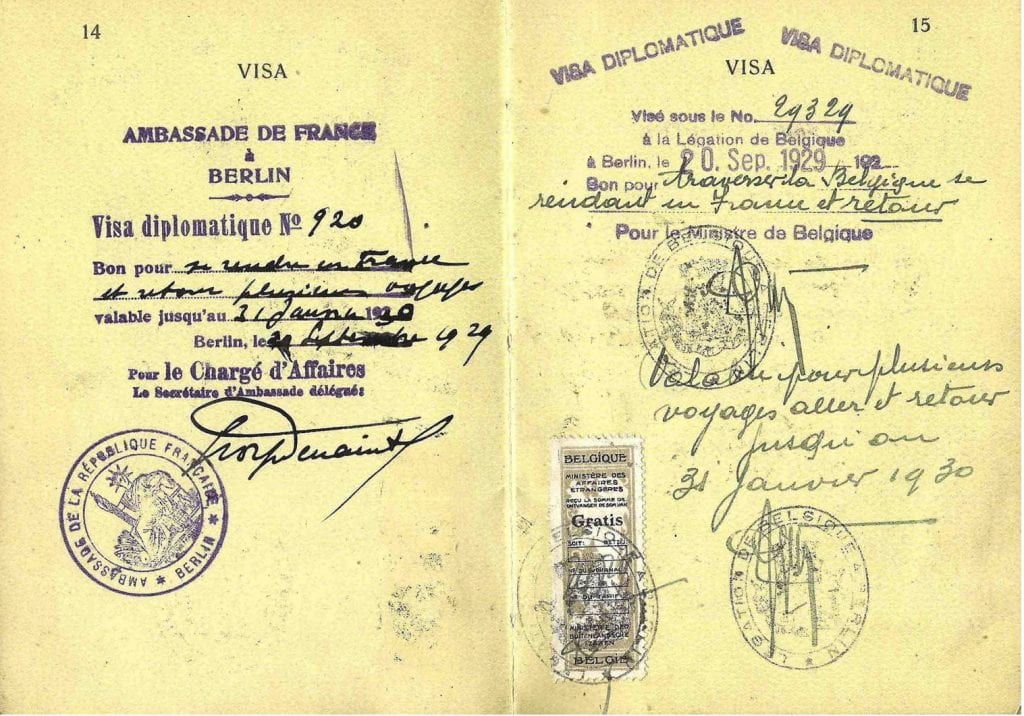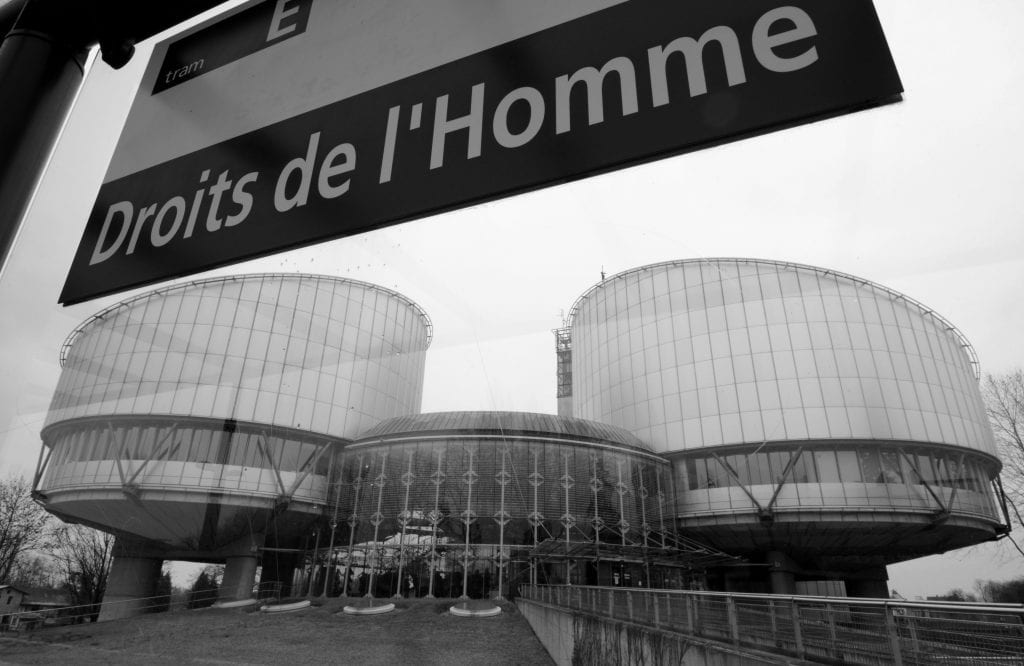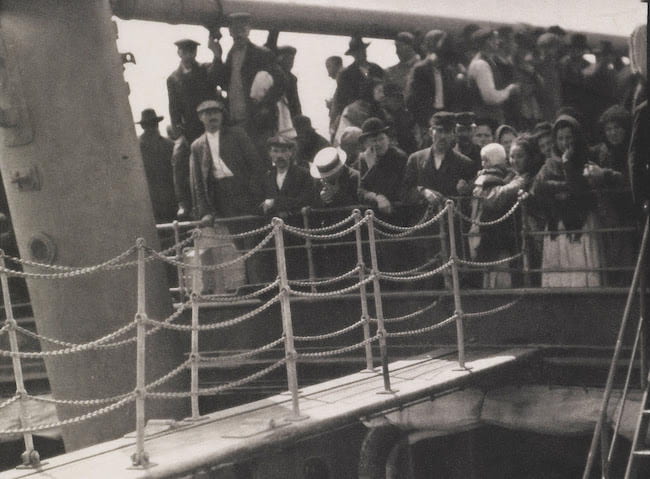By Anne Schult

Christopher Casey received his BA, MA, JD, and PhD at the University of California, Berkeley. He currently works at the Congressional Research Service and teaches at Syracuse University’s Maxwell School of Citizenship and Public Policy’s Washington D.C. program. His book Nationals Abroad: Globalization, Individual Rights, and the Making of Modern International Law was published this summer by Cambridge University Press.
Anne Schult: Your book is based on a fundamental conceptual tension found in international law: that “between people, who move, and territory, which doesn’t.” (2) By focusing on the shifting status of nationals abroad in the transatlantic world from the late 19th century to the late 20th century, you point toward an increasing incongruence between people and territory. This incongruence, in turn, fueled a gradual expansion of international law to regulate not only inter-state affairs but also the relationship between states and individuals. What does focusing on the legal realm of extraterritoriality, and the conceptual shifts within it over the last 100 years, reveal about the nature of “subjecthood” in 20th-century international law?
Christopher Casey: In some ways, I think, it reveals the weaknesses and the ultimate social and political costs of decoupling a certain kind of international protection from the state. In the 19th century, what has the misfortune of being called “diplomatic protection” was quite common. Now, diplomatic protection is not the protection of diplomats, but is, perhaps, better thought of as protection by diplomats. That is, it was common for states to make formal claims against other states for injuries sustained by their nationals abroad. It was based on what has been called the “Vattelian fiction,” the idea that an injury to a national is an injury to the state and that the state has the right to seek compensation for that injury. These claims were often resolved through recourse to either ad hoc arbitral tribunals that would hear a single case or through the establishment of claims commissions that would hear lots of cases. Such actions were common enough that they led Philip C. Jessup, a leading international legal scholar, to note in 1946 that “the international law governing the responsibility of states for injuries to aliens [was] one of the most highly developed branches of law.”
This kind of protection was conceived in very capacious terms. A person who, while abroad, was arrested and detained arbitrarily or was subjected to inhumane jail conditions could turn to their state to intervene on their behalf and seek compensation from the offending state. Similarly, a person whose property or investments were seized without process could turn to their state. The same kinds of processes, the same kinds of actors, the same kinds of institutions were used to seek compensation for both abused labor activists and investors who had their assets seized.
In the 20th century, growing migration rates and the expansion of global investment rendered this system increasingly unworkable. States were increasingly reluctant to get entangled in all of the disputes their many nationals abroad were getting into (and whom states considered to be their nationals was also changing). In its place, you get the modern patchwork of international institutions that deal with individuals, each covering a relatively small segment of social life. You get, for example, one set of institutions that hear complaints about human rights abuses, and a whole different set of institutions to hear complaints about investment disputes. And I don’t think it’s all that shocking to find out which of these institutions is more effective.
By focusing on the protection of nationals abroad, my book reveals how we have gone from relying on the protection of states at the international level to having portions of international life being the subject of different internal rights regimes. One regime might protect the body, another the retirement account. Rather than a story about the legalization of the international order, or the expansion of international law, the book instead tells a story about how the international legal order fractured.
And the consequences are being felt everywhere. There’s a great literature that explores the way in which the limited competency of many international regimes of the latter half of the 20th century has required that these institutions apply rules about one area of international life without being interested in, or able to consider, their impact on other areas. So, states have both limited their policy space and delegated certain authority to manage international disputes involving individuals to institutions with rather myopic concerns. I wanted to speak, at least in the conclusion of the book, to some of those issues.
AS: Your book predominantly asks about how far and under what conditions diplomatic protection has historically “followed” nationals beyond the state’s territorial boundaries, which—as you point out above—is often connected to questions of property. On the flip side of this history, however, lies the fate of those explicitly excluded from such diplomatic protection. Chief among those “classically oppressed” (7), as you term them, is the (stateless) refugee. Is it useful to think of these different categories as two sides of the same coin, as products of the same historico-legal process?
CC: Yes, I think they’re linked. But rather, I would say that the decline in the use of diplomatic protection and the gradual exclusion of people from belonging to the state are a part of the same historico-legal processes that made democracy and nationalism central to the legitimacy of the modern state. One issue at the center of the book is that just who belonged to what state was increasingly contested. Such debates could play out in interesting ways. In the decades around the turn of the 20th century, Britain, the United States, and France all grew increasingly concerned with just how many of their nationals were abroad, and just how many had two, three, or more nationalities. And all three countries became fundamentally concerned with redefining whether such persons (both flesh-and-blood human beings and corporations) were really British, American, or French enough (in all the many ways that could be interpreted) to entangle the state in foreign conflict. Should, for example, the United States intervene on behalf of an Italian national who had naturalized and then moved to Argentina only to have their property destroyed during a period of civil unrest? Should Britain and the United States seek compensation for the revocation by Portugal of a railway concession held by a Portuguese company, whose shares were owned by a British company, whose shares were then owned by American shareholders? Should Britain hale Germany before an international arbitral tribunal over injuries done to Indians working in German East Africa?
In part, the issue of forced expatriation—that is, the involuntary loss of nationality—and the political movement against dual nationals emerged partly in response to the perception that nationality was being instrumentalized to gain advantage abroad. And so, you start to see the proliferation of laws that forcibly expatriate people who live abroad for a certain period of time or women who marry foreigners, which leads to an expansion in formal statelessness even before the Russian refugee crisis.
And, perhaps most infamously, German policy played both sides of this issue in the interwar period. They both claimed a right to protect ethnic Germans abroad while simultaneously denationalizing their Jewish population.

AS: Although explicitly not conceptualized as a treatise on the history of human rights, your book offers a critical intervention into the canonical literature of the field, including for example works by Samuel Moyn, Lynn Hunt, and Stefan-Ludwig Hoffmann, by paralleling the rise of individualized humanitarian protection with the safeguarding of personal property and investments. Once we follow the Lockean trinity of life, liberty, and property and include the latter into the analysis, you suggest, a much more complicated picture emerges with regard to the establishment of universal individual rights in international law. How would you characterize the relationship between human rights and property rights in the 20th century? Or, to put it pointedly, how can we productively think of the refugee and the investor in tandem?
CC: Considering the refugee (or any traditional human rights claimant in the international arena) and the investor together does two things. First, looking at the rights of investors, as protected by a network of treaties and international trade agreements and placing them alongside other international rights regimes belies traditional criticisms of international legal regimes as being utopian or meaningless in an international system populated with sovereign states. We do have a system of international rights protections that enables individuals who have been injured (in the wallet, not the body or soul) by a state, to hale that state before an arbitral body, receive an award, and seek execution of that award. It happens all the time. A lot of contemporary literature on international political economy has recognized that such rights regimes have successfully limited the “policy space” of sovereign states.
Second, it gives a glimpse into legal disintegration. That is the isolation of one aspect of life from others within law and policy, and the creation of a regime that is only empowered to protect property and not empowered to safeguard life. One characteristic of the state is that, in being sovereign, it can make a claim to legislate the social, political, economic, cultural, and even the spiritual lives of those within its jurisdiction. As such, domestic legal systems and domestic policy making is often integrated. That is, the state has the potential to be concerned with protecting life and liberty and property, or to put it another way, a state can be interested in balancing property rights against other interests like access to healthcare or environmental degradation. In contrast, the refugee regime, the human rights regime, and the international investment regime do not concern themselves with those things that fall outside of their rather limited competencies. The investment regime is concerned with protecting property, the refugee regime with life and liberty. The result is that there are limited ways in which those who inhabit these respective regimes can make decisions about how to balance competing interests.
AS: As you just hinted at, the emergence of internationally recognized individual rights vis-à-vis the state also brought about new institutions to administer them—most prominently international courts and tribunals. Perhaps not surprisingly, though, these seem to function much more effectively in the realm of property and commerce, as many states not only gradually but also willingly gave up parts of their sovereignty in order to have contractual disputes between themselves and investors settled by a “neutral,” international organization. As a result, you note in your book, “traders’ and investors’ utopian visions of global justice and international rights are much closer to reality than the visions of those seeking justice for the tortured, arrested, or censored.” (8-9) What has been the prime incentive for states’ self-orchestrated loss of decision power in investment disputes?
CC: The incentive was likely to encourage investment. Former colonies were quick to sign and ratify many of the treaties underlying modern commercial arbitration and investor-state dispute settlement mechanisms and to enter into bilateral investment treaties with such provisions.
AS: Conversely, you write that the international courts that adjudicate disputes over human rights, such as the European Court of Human Rights (ECHR), have not only been less effective in establishing and defending individual rights in the humanitarian realm but have further functioned as “a means of securing property.” (193) What notable example would you say fittingly shows how these international institutions have served capital interests?
CC: I think the ECHR is a really interesting example of some of the important dynamics at play. The ECHR is probably universally regarded as the most successful of the international human rights courts. It is open to individuals to bring complaints against governments from Lisbon to Moscow and from Stockholm to Ankara. Every year, it hears nearly a thousand cases and protects those who have had their speech constrained, their religious freedoms curtailed, and their bodily autonomy threatened. In July of 2014, the ECHR issued its largest and most sweeping award for a mass human rights violation: 1.9 billion euros. Who were the poor victims that were granted this extraordinarily large award from a human rights court? They were the shareholders of the Russian Oil Company Yukos.

And I really think it’s important to think about the success of the ECHR and its role in protecting property. Does that role create the elite buy-in that makes that institution effective? I don’t know the answer. But I think that it’s worth thinking about. And Marco Duranti has done a phenomenal job in highlighting the conservative origins of the European Convention on Human Rights.
AS: Your book moves from the period of national self-determination after World War I across the rise human rights and refugee protection in the aftermath of World War II all the way to the creation of modern investor-state dispute settlements (ISDS) in the 1970s. Though covering an impressively broad set of actors and events, it is largely a history of the nation-state and nationals only. How do colonial subjects and colonial territories figure into the history of extraterritorial jurisdiction?
CC: There are many interesting ways in which this dynamic played with respect to colonial subjects and colonial territories. I’ll talk about two.
First, the issue of nationality, narrowly defined, was central to the colonial project. Now, when I talk about nationality here, I’m using it in the language of international law, which merely marks the relationship between an individual “national” and a state or sovereign. In late 19th-century international law, national and state were more or less synonymous with subject and sovereign. Among international lawyers, nationality was usually (although not always) used free from the ethnic, historic, or linguistic content that was associated with the term as it was employed during much of this period in sociology, anthropology, and domestic politics. In the classic arrangement, nationals pledge allegiance in exchange for the sovereign’s protection and vice versa. As European and American states made claims to territory, they would often quickly make it clear that the subjects in that territory were indeed their nationals.
A classic case would be the Americans in the Philippines. It’s a well-known story that Filipinos were denied American citizenship and, like Puerto Ricans, were considered “foreign in a domestic sense.” While the United States took six years or so to clear up the question of the status of Filipinos domestically, the same cannot be said of their status internationally. Within months of annexation, the United States communicated to all its consulates that Filipinos were entitled to the protection of the United States abroad. And there are instances where the United States made diplomatic claims on behalf of Filipinos mistreated abroad.
This shouldn’t be surprising. If the failure to meet international obligations was a valid pretext for the intervention by an imperial power (such as the United States against Spain), and if the legitimacy of a claim to territory rested on the reciprocal link between allegiance and protection, then any imperial power that wanted to maintain its grasp on a far flung colony had to at least appear to meet this most basic obligation, lest another imperial power challenge their claim.
And that principal continued into the interwar period as well. Nationality and protection were central to debates over what the international status of the inhabitants of mandates would be. The League didn’t want mandatory powers to confer their nationality upon the inhabitants of the mandates. Such an action would look too much like formal annexation. But, at the same time, the League understood that the inhabitants of the mandates needed formal protection abroad. A satisfactory solution was never reached, and instead you got anomalous titles like “British protected persons.”
Second, the international legal instruments undergirding investor-state dispute settlement and international commercial arbitration developed in two phases. First in the 1920s and 1930s, and then again in the 1950s and 1960s. And these decades are significant. The collapse of the European land empires and the decolonization of Eastern Europe, like in the Americas, had led to a proliferation of states. Whereas before investors were lending to Germany, Russia, or Austria, now they would have to lend to Lithuania, Poland, or Yugoslavia. Businessmen might have trusted the courts of Germany to hear their contract disputes, but they were certainly less sure about the courts of Poland. Moreover, the Mexican and Russian revolutions had brought about two massive expropriations of foreign-owned private property. So, business organizations like the International Chamber of Commerce worked with states and the League of Nations to put together treaties that would enable disputes over business transactions and investments to shift to private arbitral tribunals. Similarly, in the 1950s and 1960s, European decolonization in Africa and Asia led to the proliferation of states and a renewed set of efforts to ensure that British investors, for example, would not be subject to postcolonial courts and postcolonial law.
AS: At the very beginning of the book, you point out that nationality and citizenship are fundamentally non-synonymous terms: while the former indicates a general sense of belonging to a particular nation(-state), it does not necessarily imply any of the political rights and protections that come with the latter. Nevertheless, the two have been traditionally thought of together, and their increasing disentanglement over the course of the 20th century has brought about a host of critical commentary on the meaning and status of citizenship in times when nation-state sovereignty is seemingly on the decline and giving way to both subnational and supranational allegiances. This scholarship ranges from the critique of the increasing commodification of citizenship in Atossa Araxia Abrahamian’s Cosmopolites, to evocations of “post-national citizenship” in Seyla Benhabib’s work, to the hope for a global “rule of law” that would obviate the need for formal, legal citizenship along with its other, the “illegal” migrant, in Catherine Dauvergne’s Making People Illegal. But where does this rethinking of citizenship leave nationality as a structuring principle of legal relations between individuals and the state? In other words, how are “nationals abroad” navigating the international legal order of the 21st century?
CC: Again, here I think that the retreat of the state from that area has created a fractured system. Whereas businessmen and investors once sought out the “watchful eye and the strong arm” of states to protect their interests abroad, they now increasingly don’t. People aren’t naturalizing in Saint Kitts and Nevis for the assurance that the island will launch a formal diplomatic complaint on their behalf, or send in a gunboat to secure their property. Their money and investments are protected by a web of effective international agreements.
In contrast, the most vulnerable—particularly those without a functional state to protect them—are still, to quote Hannah Arendt, “out of legality altogether.”
Anne Schult is a PhD Candidate in New York University’s History Department. Her current research focuses on the intersection of migration, law, and demography in 20th-century Europe.
Featured Image: Alfred Stieglitz, “The Steerage,” 1907. © Estate of Alfred Stieglitz / Artists Rights Society (ARS), New York.


